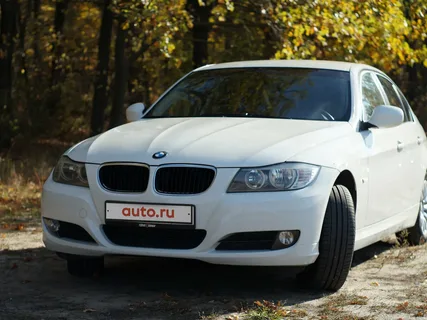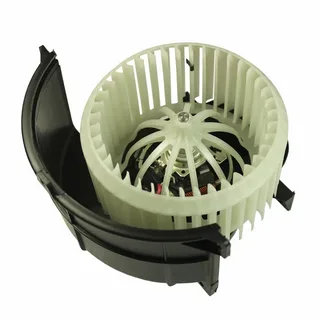When it comes to enhancing performance and maintaining the longevity of your BMW E90, one component often overlooked is the BMW E90 rocker cover. This essential part protects the engine and significantly affects the vehicle’s overall functionality. Upgrading the rocker cover can improve performance, reduce maintenance issues, and enhance the aesthetic under the hood. In this blog post, we’ll dive deep into the role of the rocker cover, common problems with stock covers, and the benefits of opting for an upgrade.
Understanding the Role of the Rocker Cover in Your BMW E90
The rocker cover, often called the valve cover, is crucial in the health and efficiency of your BMW E90’s engine. Positioned on the cylinder head, its primary duty is to shield vital engine components, such as the camshaft and valves, from dirt, debris, and other contaminants that could lead to premature wear or failure. The rocker cover is also integral to the engine’s oil management system. It houses seals and gaskets that prevent oil from leaking, ensuring proper lubrication of the engine’s moving parts. Any failure in these seals could result in oil leaks, leading to reduced engine performance and potential damage.
The rocker cover is specifically designed to endure the intense conditions within the engine bay, including high temperatures and pressures. This durability is vital for maintaining the longevity and reliability of the engine. A well-functioning rocker cover ensures that oil remains contained and appropriately directed, essential for minimizing friction and wear on internal components. This, in turn, helps maintain optimal engine performance and efficiency.
In addition to its protective functions, the rocker cover also plays a part in the engine’s ventilation. Many covers are designed with integrated ventilation systems that help manage crankcase pressure and reduce the buildup of harmful vapours. Proper ventilation is crucial for maintaining engine performance and preventing sludge buildup. By keeping the internal environment of the engine clean and well-lubricated, the rocker cover contributes significantly to the overall functionality and health of your BMW E90’s engine.
Common Issues with the Stock BMW rocker cover
Oil leakage is one of the most prevalent issues with the stock rocker cover. Over time, the seals and gaskets integral to the cover’s functionality can degrade due to constant exposure to high temperatures and pressures. This can result in oil seeping out, which not only creates a mess in the engine bay but also leads to reduced lubrication for essential engine components. Another common problem is cracking or warping of the cover itself. Often made from plastic, the stock cover can become brittle and susceptible to damage, especially under the thermal stress of an engine that regularly runs at high temperatures.
Another issue that BMW E90 owners often encounter with the stock rocker cover is ventilation failure. The integrated ventilation system can become clogged or fail over time, leading to increased crankcase pressure and the buildup of harmful vapours. This can adversely affect engine performance and even contribute to the formation of sludge inside the engine, which can be costly to rectify.
The stock BMW rocker cover is also prone to hardware failures. The bolts and fasteners that secure the cover in place can loosen or break, compromising the seal and leading to further issues like oil leaks or engine misfires. This is particularly problematic in high-mileage vehicles, where the constant engine vibrations can exacerbate these weaknesses.
Finally, many owners find that the stock rocker cover lacks the aesthetic appeal desired in a performance vehicle like the BMW E90. While this might seem superficial, an unappealing engine bay can detract from the overall enjoyment and pride of ownership for many enthusiasts.
Benefits of Upgrading to a High-Quality Rocker Cover
Upgrading to a high-quality rocker cover for your BMW E90 offers numerous advantages beyond mere engine protection. One of the primary benefits is the enhanced durability provided by superior materials like aluminium or high-grade plastics, which are more resistant to cracking and warping than stock plastic covers. This resilience ensures a longer lifespan and less frequent replacements. Additionally, aftermarket rocker covers often feature improved gasket designs that offer a better seal, drastically reducing the chances of oil leaks.
Many high-quality rocker covers are engineered with advanced ventilation systems that efficiently manage crankcase pressure, preventing harmful vapour buildup and maintaining optimal engine performance. This can also reduce the likelihood of sludge formation, contributing to a cleaner, more efficient engine.
From a performance perspective, lightweight materials used in upgraded covers can reduce the overall engine weight, marginally improving vehicle efficiency and performance. Enhanced sealing and ventilation systems contribute to a more stable and efficient running engine, potentially offering a modest boost in horsepower and torque.
Beyond functionality, an upgraded rocker cover can significantly improve the aesthetic appeal of your engine bay. Many options come in various finishes, such as polished aluminium or anodized colours, allowing you to customize your engine compartment’s look to match your style. This makes maintenance more enjoyable and enhances the overall pride of ownership.
Investing in a high-quality rocker cover is not just about preventing problems but elevating your BMW E90’s performance and appearance to the next level.
Selecting the Right Rocker Cover for Your BMW E90
The rocker cover, often called the valve cover, is a critical part of your BMW E90’s engine, housing and protecting the valvetrain components. Choosing the right rocker cover can improve your vehicle’s engine’s performance, appearance, and longevity.
Material and Durability
When selecting a rocker cover for your BMW E90, material is critical. Most aftermarket options come in aluminium or carbon fibre. Aluminium covers are durable, lightweight, and offer better heat resistance, while carbon fibre is lighter and provides a sleek, modern appearance. Make sure to choose a material that suits your driving style and climate. Aluminium is generally a good choice for daily driving or performance builds, while carbon fibre is often used in custom builds for aesthetic appeal.
Fit and Compatibility
Ensure the rocker cover is compatible with your E90’s engine model. The BMW E90 series has several engine variants (N52, N54, and N55), and each may require specific fitment. Consult your vehicle’s manual or talk to a BMW specialist to confirm the exact rocker cover for your engine.
Sealing and Gasket Quality
A good rocker cover should come with a high-quality gasket. A poor seal can lead to oil leaks, causing performance issues or engine damage. Always inspect the gasket before installation or consider replacing it if it is worn out.
Choosing the right rocker cover enhances engine protection and performance, ensuring your BMW E90 runs smoothly for years.
Installing a New Rocker Cover
Installing a new rocker cover may seem daunting, but it can be a manageable DIY project with the right tools and guidance. Gather the necessary tools, including a socket set, torque wrench, and any specialized tools required for your specific rocker cover. Before removing the old cover, ensure the engine is excellent to avoid burns. Carefully detach the existing rocker cover, taking note of any wiring or hoses that may be in the way.
Remove the bolts, securing the cover in a cross-pattern to relieve any pressure evenly. Gently lift the old cover off, being mindful of the gasket. Clean the mounting surface on the engine thoroughly to ensure a proper seal with the new cover. Any residual oil or debris could compromise the seal and lead to leaks.
Position the new rocker cover carefully, ensuring it aligns perfectly with the mounting holes. If your new cover comes with a new gasket, place it according to the manufacturer’s instructions. Once the cover is in place, start securing it with the bolts, again using a cross-pattern to distribute pressure and avoid warping the cover evenly. Use a torque wrench to tighten the bolts to the manufacturer’s recommended specifications, as overtightening can damage the cover or the engine block.
After securing the new rocker cover, reattach any wiring or hoses you disconnected earlier. Double-check all connections and bolts to ensure everything is securely in place. Please turn on the engine and let it run for a few minutes while inspecting for leaks or unusual noises. This ensures your installation was successful and the new cover is functioning correctly.
Maintenance Tips to Extend the Life of Your Rocker Cover
The rocker cover, often called the valve cover, is crucial in protecting the engine’s valve train. Proper maintenance of this component ensures optimal engine performance and longevity. Here are some essential tips to extend the life of your rocker cover.
1. Regular Inspection for Leaks
Over time, the rocker cover gasket can deteriorate, leading to oil leaks. Check the area around the cover regularly for signs of oil seepage or residue. Early detection of leaks prevents engine damage and contamination of other components.
2. Clean the Rocker Cover
Dirt, debris, and oil buildup on the rocker cover can cause wear and tear. Clean the cover periodically using a non-corrosive cleaner. This not only improves your engine’s appearance but also helps spot leaks and damage.
3. Replace the Gasket as Needed
The gasket underneath the rocker cover is essential for creating a proper seal. If you notice cracks or brittleness, replace the gasket immediately. A well-maintained gasket prevents leaks and ensures the engine stays well-lubricated.
4. Avoid Over-tightening the Bolts
When reinstalling the rocker cover, be mindful not to over-tighten the bolts. Excessive torque can damage the gasket or the cover itself, leading to costly repairs.
By following these maintenance tips, you can ensure the longevity of your rocker cover and keep your engine running smoothly.
Conclusion
Upgrading the BMW E90 rocker cover offers many benefits, from enhanced engine protection to improved aesthetics. A high-quality rocker cover from durable materials like aluminium or high-grade plastic can provide greater resilience against cracking and warping, ensuring a longer lifespan. Advanced gasket designs in aftermarket options reduce the likelihood of oil leaks, while improved ventilation systems manage crankcase pressure effectively, contributing to better engine performance and preventing harmful vapour buildup. Proper installation and regular maintenance include inspecting for oil leaks and ensuring all bolts are tightened to manufacturer specifications.
FAQS
Why should I upgrade my BMW E90 rocker cover?
Upgrading your BMW E90 rocker cover can enhance engine durability, reduce the risk of oil leaks, improve ventilation, and add aesthetic appeal to your engine bay.
What materials are best for a rocker cover upgrade?
High-quality materials like aluminium and high-grade plastics are recommended for their durability and resistance to cracking or warping.
How does an upgraded rocker cover improve engine performance?
Enhanced sealing and better ventilation systems in upgraded covers help maintain optimal engine performance by ensuring proper oil management and reducing crankcase pressure.
Is it difficult to install a new rocker cover on my BMW E90?
While it requires some mechanical knowledge, installing a new rocker cover can be a manageable DIY project with the right tools and guidance.
How often should I inspect my rocker cover?
Regular inspections, ideally during routine maintenance or oil changes, can help catch potential issues like leaks or gasket wear early.
Can an upgraded rocker cover improve my car’s aesthetic?
Yes, many aftermarket covers come in various finishes, allowing you to customize the look of your engine bay.
What are common signs that my rocker cover needs replacing?
Look for oil leaks, visible cracks, warping, or issues with ventilation systems as indicators that a replacement might be necessary.




